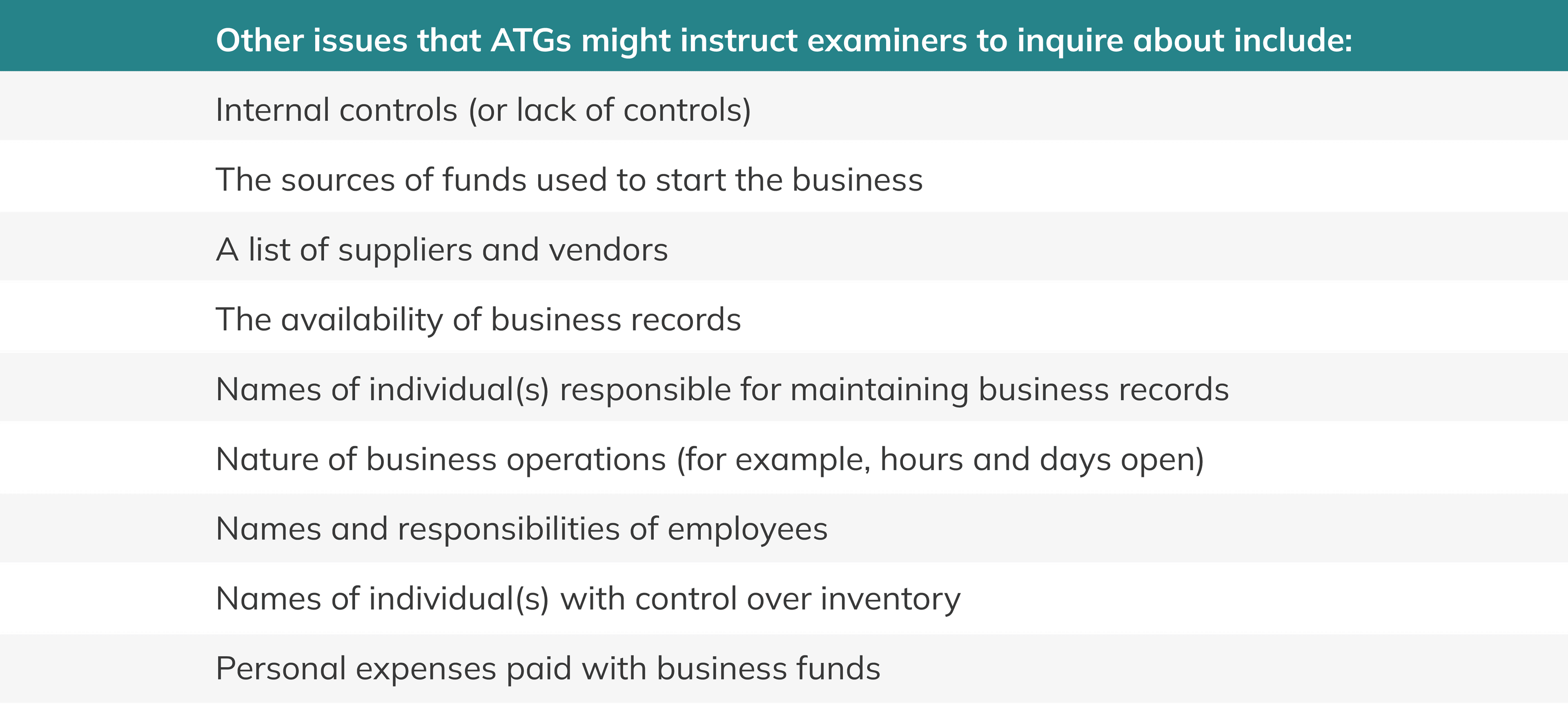
Decoding IRS Audit Guidance for Better Compliance
IRS examiners typically conduct thorough research before meeting with taxpayers and their representatives. This preparation often includes reviewing relevant Audit Techniques Guides (ATGs), which focus on specific industries or common audit-triggering business transactions. Although ATGs are designed to assist examiners, they are also publicly available, providing small business owners with valuable insights into potential audit issues.
Auditor Specialization
In the past, IRS examiners were randomly assigned to audit taxpayers from all walks of life, with no real continuity or common thread. For example, after an examiner audited a dentist, the next assignment he or she received might have been a fishing boat captain or a convenience store owner. Therefore, there was little chance to develop expertise within a particular niche.
To remedy this, the IRS created its Market Segment Specialization Program (MSSP), which expanded rapidly during the 1990s. The MSSP allowed IRS auditors to focus on specific sectors. Through education and experience, examiners became better equipped to identify and detect noncompliance with the tax code.
The IRS started publishing ATGs as an offshoot of the MSSP. Most ATGs target major industries, such as construction, manufacturing and professional practices (including physicians, attorneys and accountants). Other ATGs address issues that frequently arise in audits, such as executive compensation and fringe benefits.
The IRS periodically revises and updates the ATGs and adds new ones to the list. (See "IRS Jumps into Golden Parachutes" at right.)
A Closer Look at Audit Technique Guides
What does an ATG cover? The IRS compiles information obtained from past examinations of taxpayers and publishes its findings in ATGs.

The main goal of ATGs is to improve examiner proficiency. By using a specific ATG, an examiner may, for example, be able to reconcile discrepancies when reported income or expenses aren't consistent with what's normal for the industry or to identify anomalies within the geographic area in which the taxpayer resides. The guides also help examiners plan their audit strategies and streamline the audit process.
Over time, the information and experience gained about a particular market segment can help examiners conduct future audits with greater efficiency. Some of this information is incorporated into periodic ATG updates. Furthermore, IRS examiners are routinely advised about industry changes through trade publications, trade seminars and information sharing with other personnel.
Site Visits and Interviews
ATGs also identify the types of documentation that taxpayers should provide and information that might be uncovered during a tour of the business premises. These guides may be able to identify potential sources of income that could otherwise slip through the cracks.
For example, the ATG for the legal profession identifies revenue streams derived from outside the general practice, such as serving on a board of directors, speaking engagements, and book writing or editing. The guide encourages IRS examiners to inquire about potential revenue sources during the initial interview with the taxpayer.

For example, one Audit Technique Guide focuses specifically on cash-intensive businesses, such as liquor stores, salons, check-cashing operations, gas stations, auto repair shops, restaurants and bars. It highlights the importance of reviewing cash receipts and cash register tapes for these types of businesses.
Cash-intensive businesses may be tempted to underreport their cash receipts, but franchised operations may have internal controls in place to deter such "skimming." For instance, a franchisee may be required to purchase products or goods from the franchisor, which provides a paper trail that can be used to verify sales records.
Likewise, when auditing a liquor store owner, examiners are taught to search for off-book wholesalers and check cashers. For gas stations, examiners must check the methods of determining income, rebates and other incentives. Restaurants and bars should be asked about net profits compared to the industry average, spillage, pouring averages and tipping.
Help with Audit Technique Guides
During an audit, IRS examiners concentrate on industry-specific factors and common tactics for concealing income or inflating deductions, with Audit Techniques Guides playing a key role in this process. While ATGs are designed for IRS employees, they can also help small businesses avoid practices that may trigger scrutiny. You can access the full list of Audit Technique Guides on the IRS website.
For more information around best practices to maintain tax compliance, reach out to CSH.



